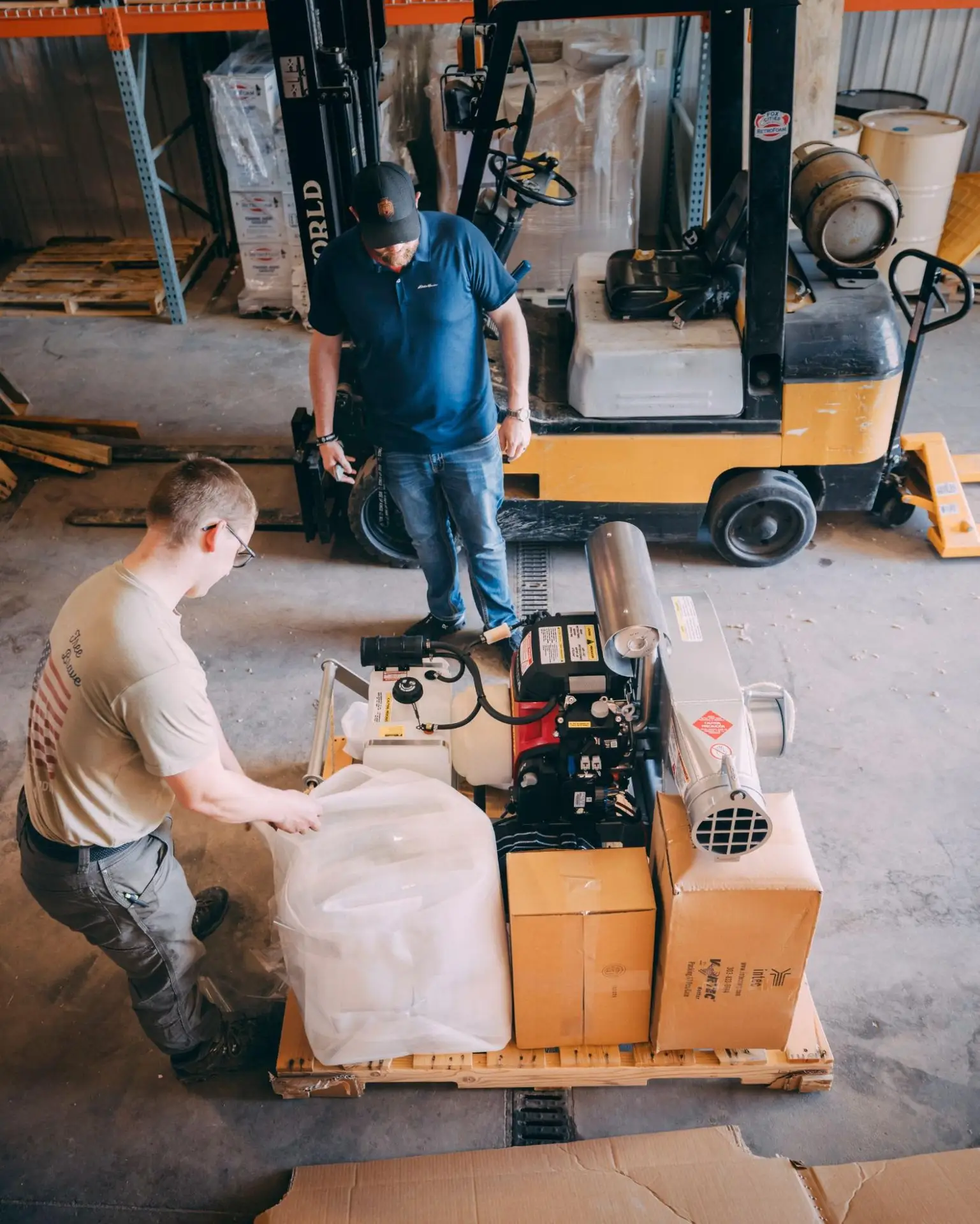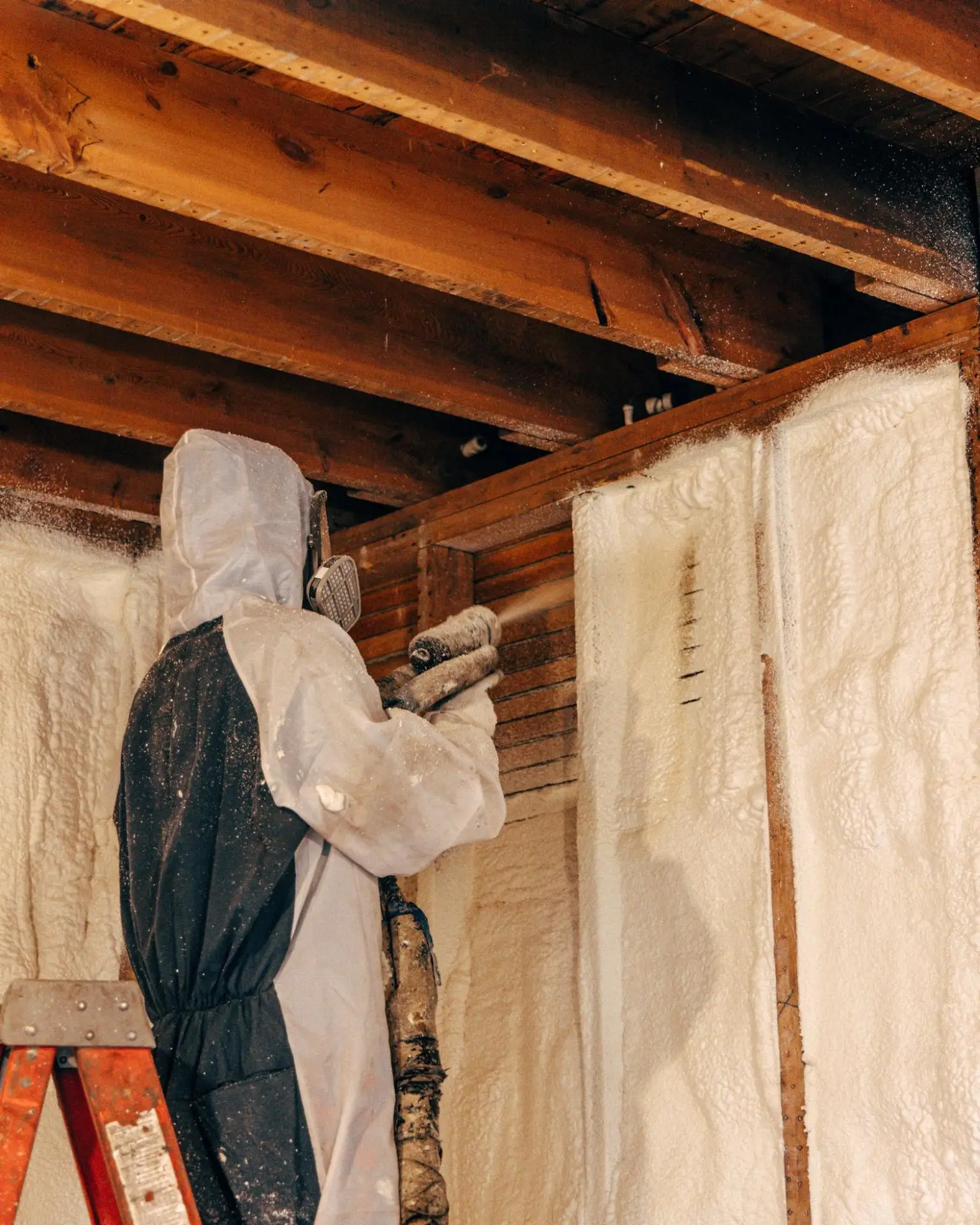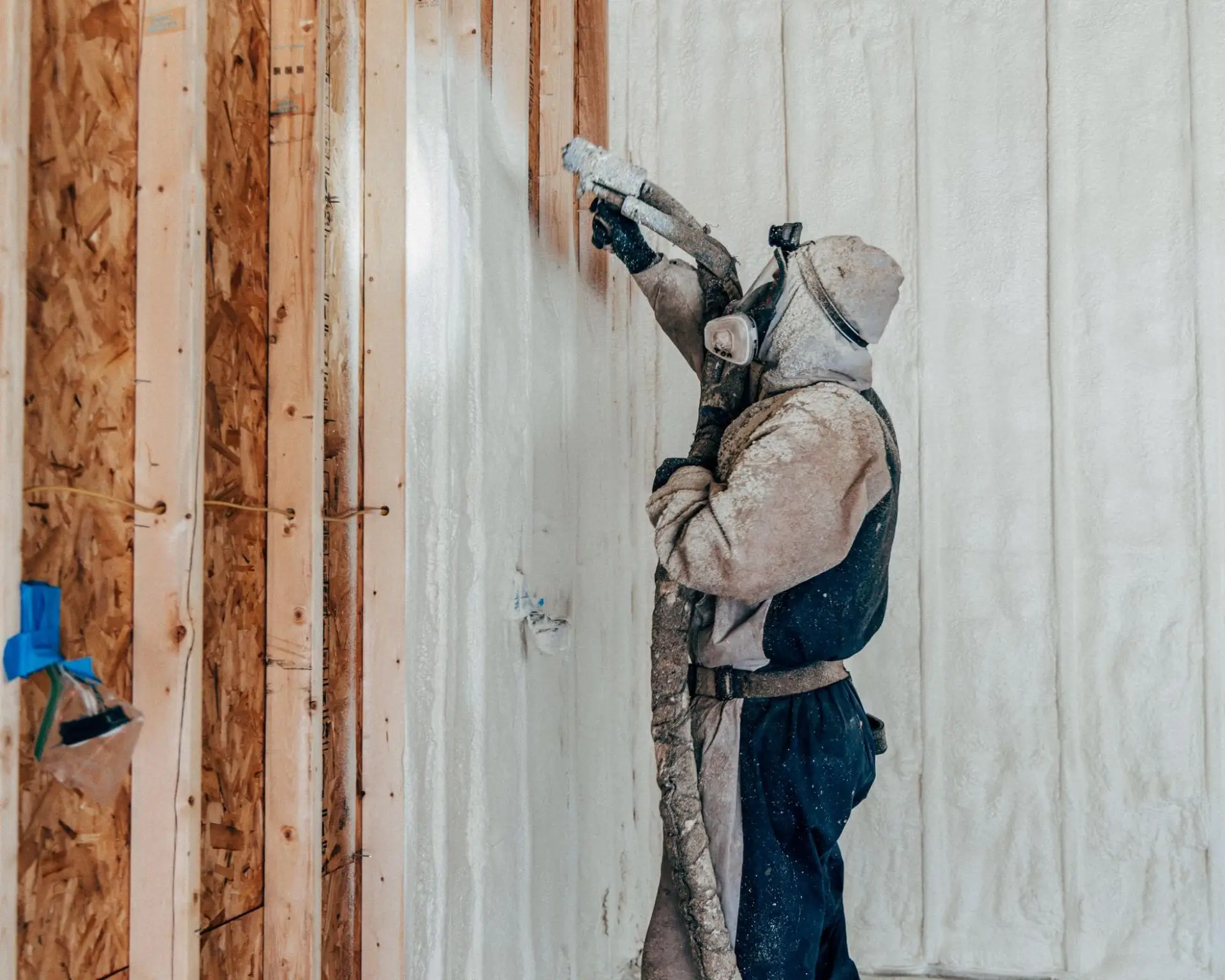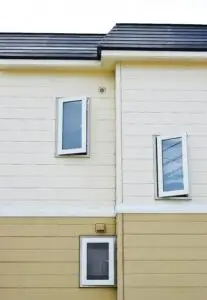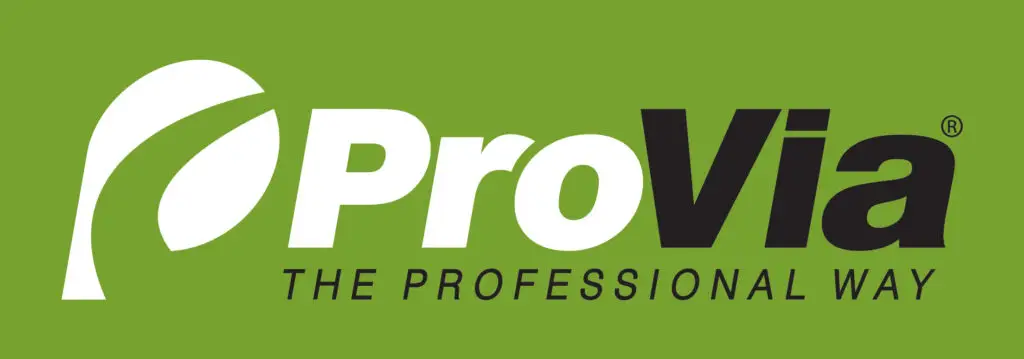Spray foam insulation has gained popularity as an effective alternative to traditional materials like wool for improving home energy efficiency. While it offers superior insulation compared to drywall and paint, concerns about its safety have emerged. When considering this insulation option, homeowners must weigh the benefits against possible health and environmental risks.
In this article, we’ll explore the safety aspects of spray foam insulation to help you make an informed decision for your home.
Key Takeaways
- Spray foam insulation contains complex chemicals that require careful examination for safe application
- Proper ventilation and safety measures are crucial during and after spray foam installation
- Off-gassing from spray foam can impact indoor air quality for weeks or months
- Spray foam’s fire safety profile depends on chemical composition and proper installation techniques
- Recycling and disposal of spray foam present environmental challenges due to its complex composition
Investigating the Safety of Spray Foam Insulation During Installation
The installation process of spray foam insulation requires careful attention to safety protocols. Installers must take precautions to protect their skin and respiratory systems from potential hazards. Unlike traditional wool insulation or fiberglass, spray foam application involves chemical reactions that necessitate proper ventilation during and after installation. Research has shown that inadequate safety measures can lead to health risks for both installers and occupants. Homeowners considering spray foam insulation should be aware of these safety considerations, as they may impact not only their well-being but also factors such as mortgage approval and long-term property value.
Protective Measures for Installers
Installers must take stringent protective measures when applying spray foam insulation to safeguard against exposure to isocyanates and other harmful chemicals. They should wear appropriate personal protective equipment, including respirators, gloves, and full-body suits. Proper ventilation of the work area is crucial, often requiring the use of specialized equipment brought in by truck. Regular safety training and adherence to industry guidelines are essential to address any questions or concerns arising during installation.
Ventilation Requirements During Application
Proper ventilation during spray foam insulation application is crucial to mitigate health hazards and air pollution risks. Installers must ensure adequate airflow throughout the workspace, particularly when applying adhesive-like foam to ceilings or enclosed areas. Effective ventilation systems help minimize exposure to potentially harmful chemicals, reducing the risk of respiratory issues and other health concerns for both workers and future occupants.
- Install temporary ventilation systems
- Use exhaust fans to remove fumes
- Seal off adjacent living spaces
- Monitor air quality during application
- Allow for proper curing time before occupancy
Addressing the Myth: Does Spray Foam Insulation Off-Gas?
Spray foam insulation’s potential for off-gassing has sparked debates in the construction industry. Unlike mineral wool or memory foam, spray foam undergoes a chemical reaction during application, raising concerns about indoor air quality. The Occupational Safety and Health Administration emphasizes the importance of proper ventilation to mitigate these risks. Homeowners and contractors must understand the off-gassing process to ensure safe living environments. Monitoring techniques and awareness of chemical emissions play crucial roles in addressing this issue effectively.
What Is Off-Gassing?
Off-gassing refers to the release of volatile organic compounds (VOCs) and other chemicals from materials, including spray foam insulation. Spray foam insulation can release gases, but the duration and intensity vary by product. Low-VOC spray foam has a shorter re-occupancy time, usually about 2 hours. Choosing low-VOC products reduces off-gassing and ensures a safer environment.
While spray foam insulation safety is a primary concern, manufacturers provide safety data sheets detailing potential emissions. Homeowners should consider the global warming potential of these emissions and compare them to alternative insulation materials like cellulose.
| Aspect | Description |
|---|---|
| Definition | Release of VOCs and chemicals from materials |
| Duration | Weeks to months after installation |
| Safety Measures | Safety data sheets provided by manufacturers |
| Considerations | Global warming potential, alternative insulation options |
Monitoring Off-Gassing in Residential Spaces
Monitoring off-gassing in residential spaces involves testing for volatile organic compounds (VOCs) and other chemicals released by spray foam insulation. Homeowners should be aware that some spray foam products contain flame retardants and may release carbon-based compounds during the curing process. Regular air quality checks can help detect potential issues that might lead to shortness of breath or exacerbate asthma symptoms in sensitive individuals. Comparing spray foam to mineral-based insulation options can provide valuable insight into long-term air quality and safety considerations for residential spaces.
Is Spray Foam Insulation Safe for Homes With Pets and Children?
Spray foam insulation’s safety in homes with pets and children requires careful evaluation. While it offers superior energy efficiency, concerns about chemical exposure persist. Data on long-term effects remains limited, unlike well-documented hazards of asbestos. Modern formulations often include fire retardants, which may impact indoor air quality. During installation, it’s not necessary for occupants to leave their home; staying out of the immediate area suffices, even for children and pets. This contrasts with misinformation suggesting a 24-hour absence, which doesn’t apply to the products used in this particular installation. As spray foam adheres to walls, creating an airtight seal, proper installation and ventilation are crucial. Homeowners must weigh the benefits of reduced energy costs against potential health risks, especially for sensitive populations like young children and pets.
Considerations for Sensitive Populations
Sensitive populations, such as children and individuals with respiratory conditions, require special consideration when evaluating spray foam insulation safety. Experts recommend gathering comprehensive information about the specific product’s composition and potential off-gassing before installation. Water-based spray insulation may offer a safer alternative for homes with sensitive occupants, as it typically contains fewer volatile organic compounds than traditional closed-cell foam. Homeowners should consult with an insulation expert to determine the most suitable and safest option for their specific needs.
Minimizing Exposure Risks in Living Spaces
Minimizing exposure risks in living spaces involves careful consideration of spray foam insulation application and maintenance. Proper installation of polyurethane foam can reduce the release of particulates and harmful chemicals into the air. Homeowners should ensure adequate ventilation during and after application, especially in areas prone to heat buildup, such as attics and upper floors. Regular cleaning and maintenance of spray foam insulation can help prevent the accumulation of dust and other potential irritants on surfaces, further reducing exposure risks for pets and children.
Can Spray Foam Insulation Contribute to Better Air Quality?
Spray foam insulation’s impact on air quality extends beyond its primary function of thermal regulation. When applied correctly by an experienced insulation contractor, it can significantly reduce the infiltration of outdoor pollutants and allergens. This airtight seal not only prevents corrosion caused by moisture but also helps control indoor humidity levels, potentially inhibiting mold growth. However, the relationship between spray foam and air quality is complex, as its flame-retardant properties and chemical composition may introduce new considerations for indoor air health. Understanding these factors is crucial for homeowners seeking to optimize their living environment.
Sealing Leaks and Reducing Outdoor Pollutants
Spray foam insulation effectively seals leaks and reduces outdoor pollutants, improving indoor air quality. The National Institute for Occupational Safety and Health recommends proper sealing techniques to minimize exposure to toxicants. In Michigan, homeowners have reported better air quality after applying spray foam to concrete foundations, as documented in a PDF study. This airtight barrier prevents the infiltration of allergens, dust, and other airborne contaminants, creating a healthier living environment.
Impact on Indoor Humidity and Mold Growth
Spray foam insulation can significantly impact indoor humidity levels and mold growth. By creating an airtight seal, it reduces the infiltration of moisture-laden air, helping to maintain optimal humidity levels inside homes. This moisture control can inhibit mold growth, which often thrives in damp environments. However, improper installation or inadequate ventilation may trap moisture within walls, potentially leading to mold issues. Homeowners should consider the balance between energy efficiency and proper air exchange to prevent these problems:
- Ensures airtight seal to control moisture infiltration
- Helps maintain optimal indoor humidity levels
- Can inhibit mold growth in properly installed systems
- Requires proper ventilation to prevent moisture trapping
- Balances energy efficiency with air exchange needs
The Fire Safety Profile of Spray Foam Insulation
Spray foam insulation’s fire safety profile is a critical consideration for homeowners seeking to balance energy efficiency with building safety. As green building practices gain popularity, understanding how spray foam performs in fire scenarios becomes paramount. This insulation type, often applied between rafters and around wires, not only provides excellent soundproofing but also impacts a structure’s fire resistance. The presence of fire retardants in foam formulations and their effect on limiting oxygen supply during combustion are key factors in evaluating spray foam’s overall safety profile.
Flammability Ratings of Spray Foam Products
Flammability ratings of spray foam products vary depending on their chemical composition and application method. Manufacturers often incorporate fire retardants into their formulations to improve safety, especially for use in bedrooms and other living spaces. Plastic-based foam insulation undergoes rigorous testing, including blower door tests, to assess its fire resistance and smoke production. Installers must wear personal protective equipment during application to protect against potential hazards. Some spray foam products now include recycled materials, which may affect their fire safety profile and should be considered when evaluating overall home safety.
Enhancing Home Safety With Fire Retardants in Foam
Fire retardants in spray foam insulation enhance home safety by reducing the spread of flames and smoke in case of a fire. These additives work by slowing down the combustion process, giving occupants more time to evacuate and limiting damage to the structure. However, concerns exist about the potential health impacts of some fire retardants, particularly on lung function and indoor air quality, especially in humid spaces where off-gassing may occur. Installers must use proper protective gear when applying foam containing these agents, and homeowners should consider the trade-offs between fire safety and potential long-term exposure to chemicals used as blowing agents and flame retardants.
Recyclability and Environmental Impact of Discarded Spray Foam
Spray foam insulation’s end-of-life considerations raise important questions about its environmental impact and recyclability. Unlike traditional fiber insulation materials, spray foam presents unique challenges for disposal and recycling due to its chemical composition and adhesive properties. As homeowners increasingly prioritize sustainable building practices, the fate of discarded spray foam becomes a critical factor in assessing its overall safety and environmental footprint. The material’s ability to act as a vapor barrier and its adhesion to wood structures complicate removal and recycling efforts. Additionally, potential allergens in aged foam may pose health risks during demolition, potentially affecting insurance coverage for removal projects. Understanding these issues is essential for making informed decisions about spray foam insulation in residential applications.
Challenges in Recycling Spray Foam Materials
Recycling spray foam insulation presents significant challenges due to its complex chemical composition and adhesive nature. The price of recycling often exceeds that of new materials, making it economically unfeasible for many recycling facilities. Contamination from building materials and potential throat irritants in aged foam pose health risks during the recycling process. Limited knowledge about effective recycling methods for spray foam further hinders the development of environmentally friendly disposal solutions.
Sustainable Disposal of Foam Insulation
Sustainable disposal of foam insulation requires careful consideration of environmental impacts and consumer safety. Climate-conscious building practices now emphasize the need for proper disposal methods that minimize landfill waste and potential groundwater contamination. Homeowners renovating basements or removing old insulation should use eye protection and follow local regulations for disposing of this building material, as it may contain harmful chemicals that can persist in the environment long after discarding.
Making an Informed Decision: Is Spray Foam Insulation the Right Choice?
Homeowners in Wisconsin face a crucial decision when considering spray foam insulation for their properties. As construction practices evolve to address climate change, the balance between energy efficiency and safety becomes paramount. Spray foam’s ability to create an airtight seal offers significant benefits in reducing energy consumption, but concerns about its impact on respiratory health and fire safety require careful evaluation. Professional consultation is essential to navigate the complex landscape of insulation options, ensuring that homeowners make choices that protect both their families and the environment. By understanding the nuances of spray foam insulation, individuals can make informed decisions that align with their safety priorities and energy efficiency goals.
Balancing Safety Concerns With Energy Efficiency Benefits
Balancing safety concerns with energy efficiency benefits requires careful consideration of spray foam insulation’s potential risks and rewards. While the science behind spray foam’s insulating properties demonstrates significant energy savings, homeowners must weigh these advantages against possible health hazards, such as eye irritation or respiratory issues caused by chemical exposure. Proper installation techniques, including managing pressure during the application, can mitigate some risks, but the potential for off-gassing and the presence of flame retardants that some consider a form of poison necessitates thorough research and professional consultation before making a decision.
Consulting Professionals for Safe Insulation Choices
Consulting professionals for safe insulation choices helps homeowners navigate the complexities of spray foam insulation. Experienced contractors can assess potential risks associated with isocyanate exposure and advise on proper safety measures to protect against breathing difficulties during installation. They can also recommend alternative materials, such as polyurethane-based products, that may offer similar benefits with reduced health concerns. Professional guidance ensures proper waste management and adherence to safety protocols, minimizing the risk of long-term health issues associated with spray foam insulation.
Conclusion
Evaluating spray foam insulation for home safety is crucial for homeowners seeking energy efficiency without compromising health and well-being. Understanding the chemical components, installation processes, and potential health risks associated with spray foam insulation empowers individuals to make informed decisions about their living spaces. Proper ventilation, adherence to building codes, and consideration of long-term environmental impacts play vital roles in ensuring the safe application and use of this insulation method. By carefully weighing the benefits against potential risks and consulting with professionals, homeowners can determine whether spray foam insulation aligns with their safety priorities and energy efficiency goals.

